What Are Website Demographics?
Website demographics are the characteristics of the people who visit your website. That can include information such as age, gender, location, income, education level, interests, and more.
By analyzing website demographics, you can understand your audience better. And tailor your content and marketing strategies more effectively.
Why Is Website Demographic Data Important?
Website demographic data helps you create content that’s more relevant and appealing to your audience.
And if your content resonates with them, they’re more likely to engage with your business and even buy from you.
Plus, demographic data guides your advertising efforts.
It enables you to do more precise targeting in your campaigns. Which leads to more efficient use of your budget and probably higher conversion rates.
Finally, demographics can inform your product development roadmap.
For example, if your audience is young and eco-conscious, you might consider developing environmentally friendly products. Or emphasizing your sustainability efforts in your marketing materials.
This can lead to higher customer satisfaction, greater loyalty, and increased sales.
How to Find Demographic Data for Your Website and Your Larger Audience
There are several research methods to uncover your website audience demographics as well as information about the rest of your audience. We’ve rounded up some of the best options to consider.
Use Google Analytics
Google’s free analytics platform—Google Analytics 4 (GA4)—can be used as a website demographics tool to get detailed audience information for your website.
But you need to have Google Analytics installed first to see all the information. If you need help, check out our GA4 guide to get started.
To see the demographics data within GA4, go to “Reports”> “User” > “User Attributes” > “Overview.”
You’ll see a breakdown of your website audience by country, age group, gender, and more.
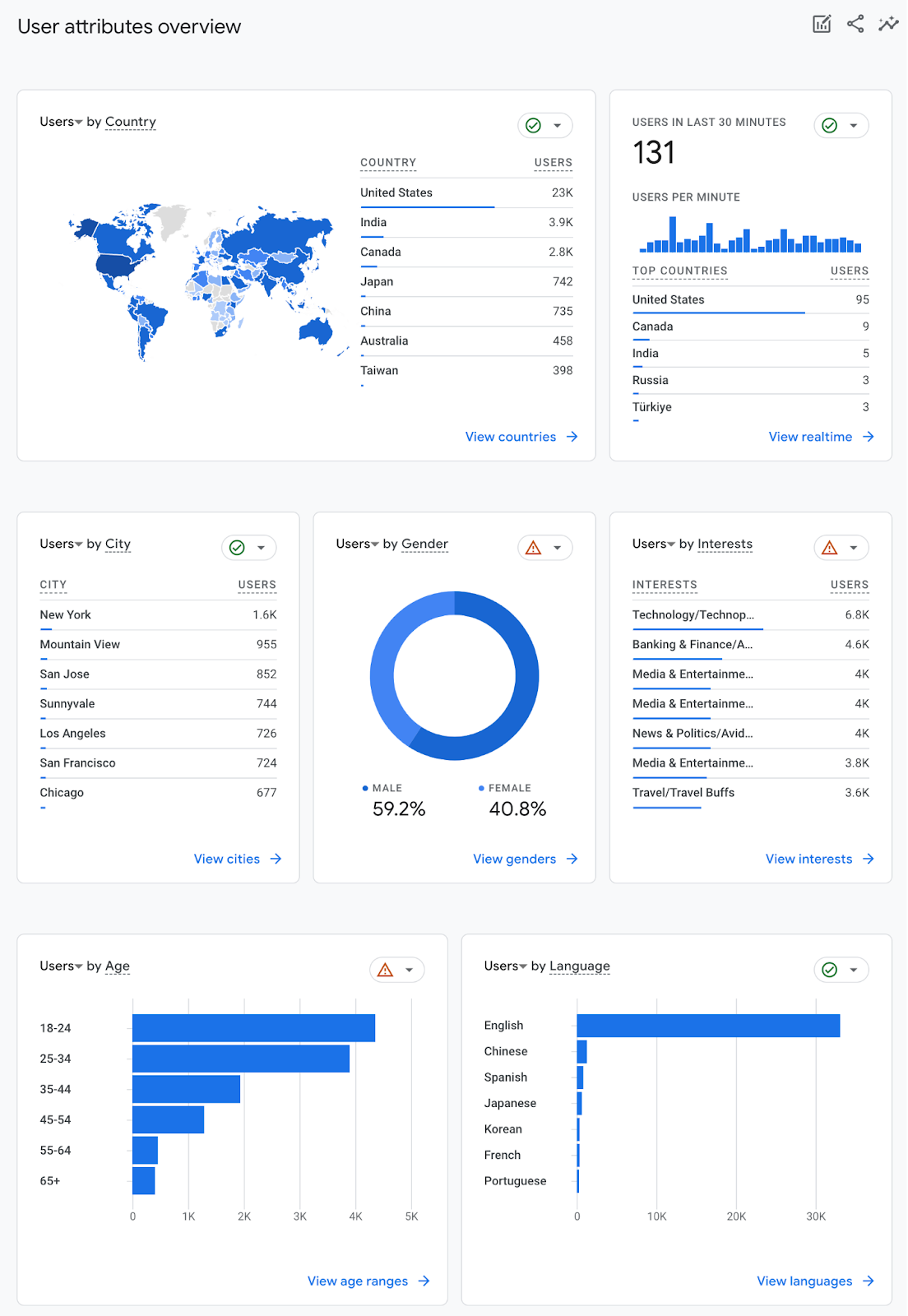
Use One2Target
Semrush’s One2Target tool is a good option to find the demographics of your main competitors’ audience.
This tool analyzes your competitors’ domains and shows the audience traits they share.
Let’s say Walmart is your top competitor. Enter their domain name in the tool and click “Analyze.”

You’ll get a complete overview of their audience.
In the “Demographics” tab, you’ll see the audience’s age, gender, and which countries they live in:
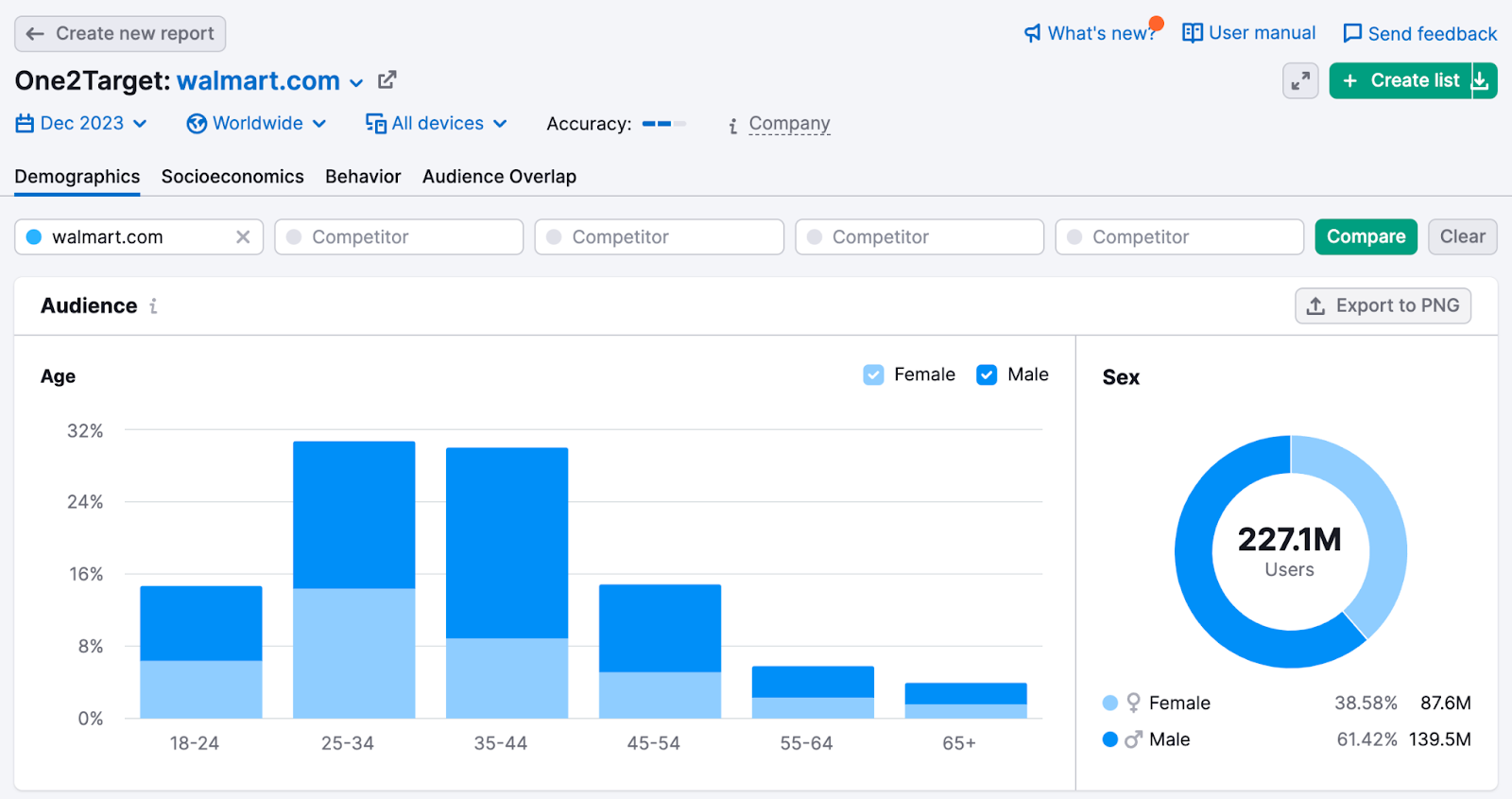

In the “Socioeconomics” tab, you’ll see the audience’s household size, income level, employment status, and educational level:
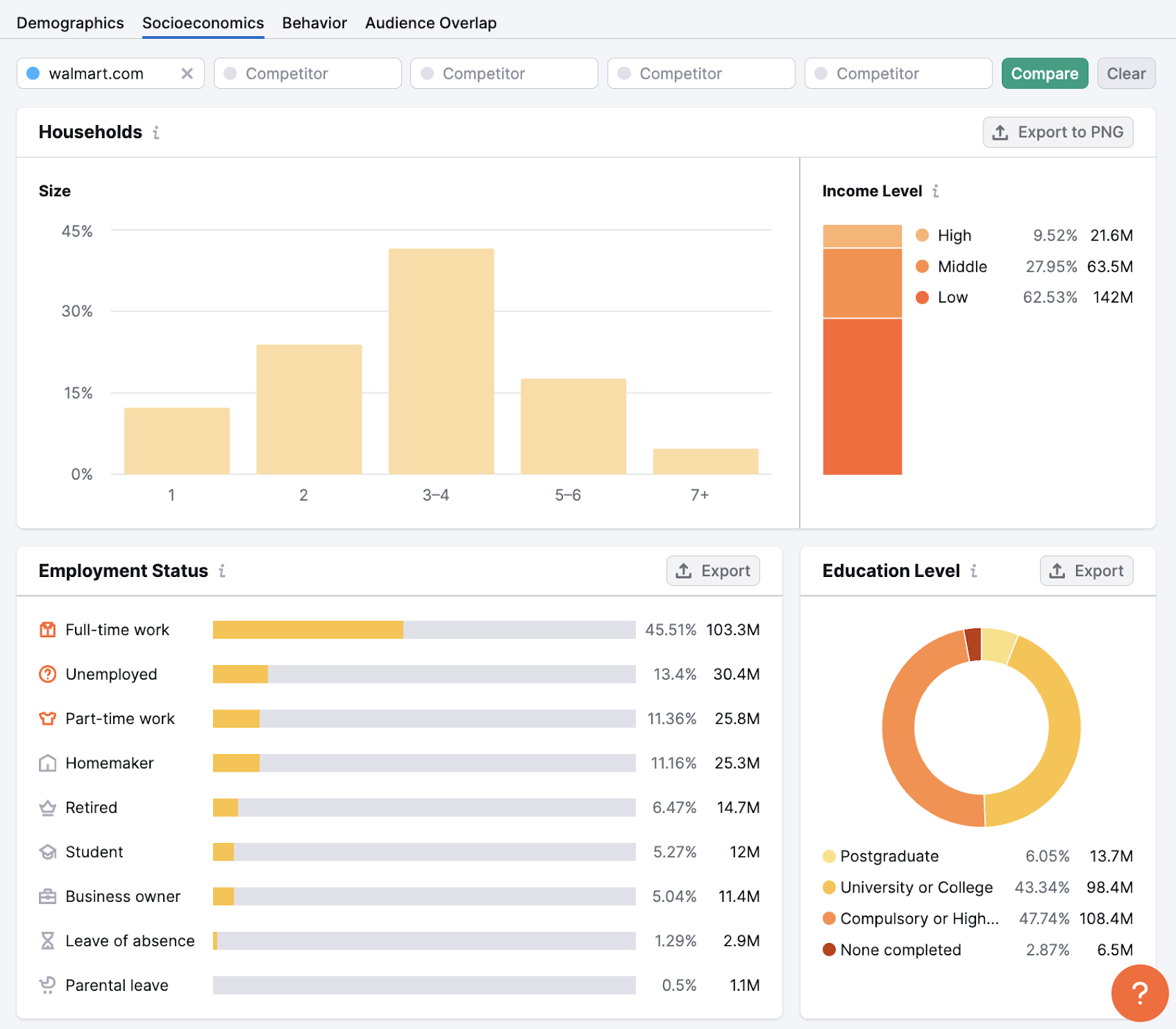
And in the “Behavior” tab, you’ll find their interests, the device types they use, and the social media platforms they prefer:
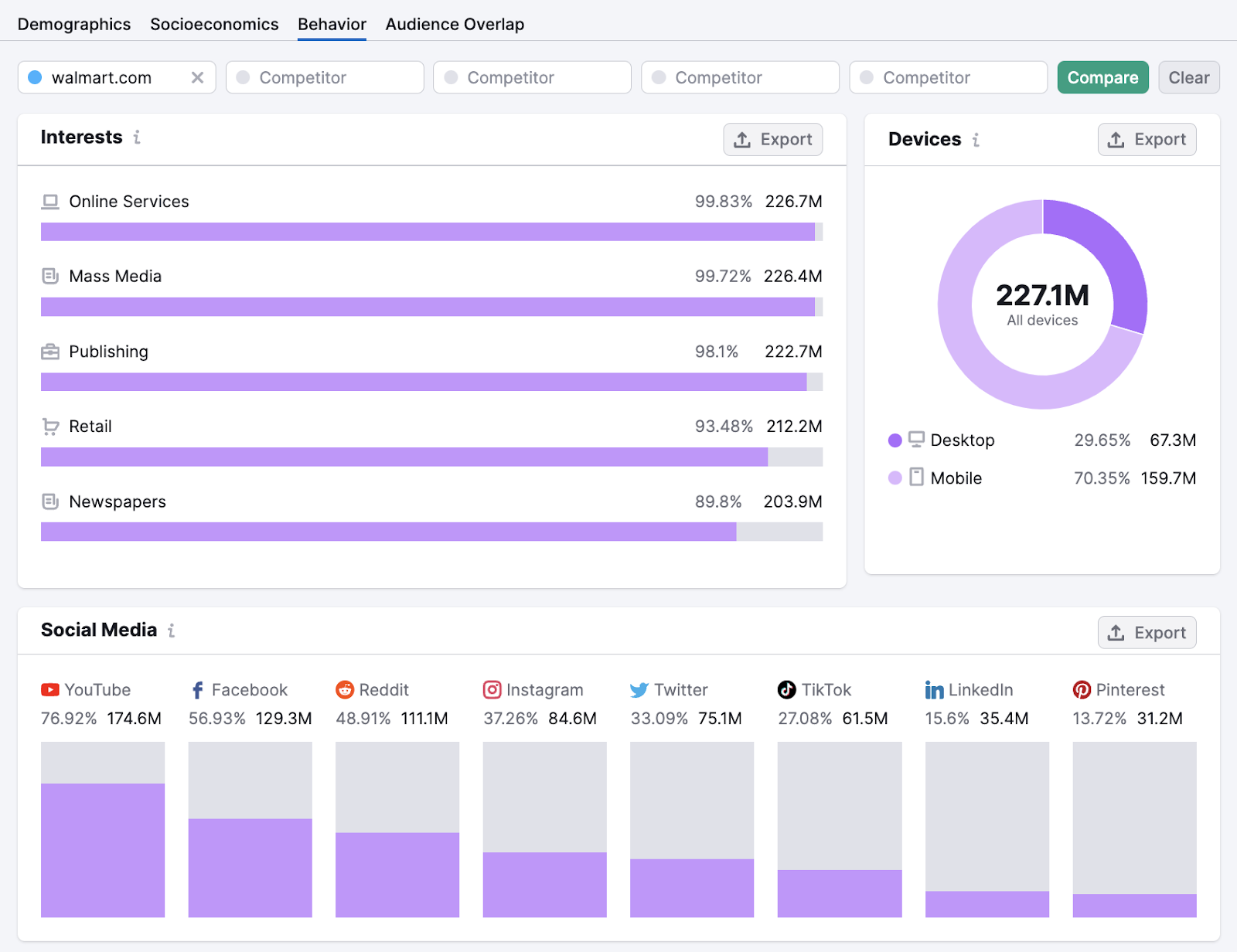
Getting these rich audience insights for your top competitors gives you a strong sense of the demographics who could engage with your products, too.
Create and Distribute Surveys
Create surveys to ask your website visitors directly about their demographics and other information.
You can use tools like SurveyMonkey, Typeform, or Google Forms to easily design and distribute your surveys.
These tools are user-friendly and offer a variety of question types—from multiple-choice to open-ended questions.
For example, you could ask visitors about their age range, gender, geographic location, or specific interests related to your website’s content or products.
You can embed surveys on your website or send them to your email list through a campaign. As an incentive, consider offering a discount code or entering respondents into a giveaway.
Use Facebook Audience Insights
Facebook’s Audience Insights gives you demographic information for your followers on Facebook (and Instagram).
Why is this useful?
Because your followers are likely going to be people who visit your website. So their characteristics can reflect information about your website visitors as well.
To access the data, go to your Meta Business Manager dashboard, click “Insights” from the menu, and choose “Audience.”
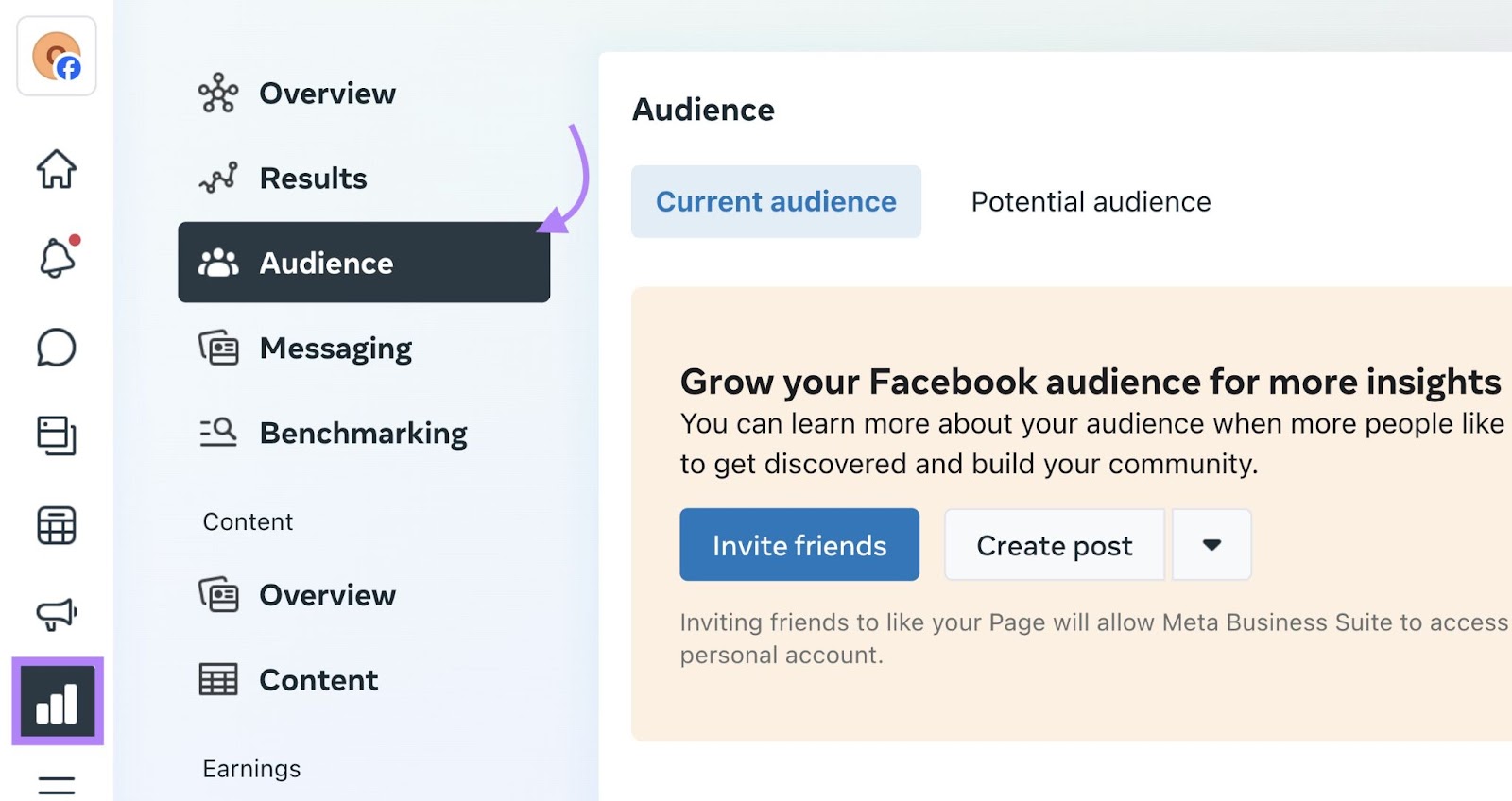
You’ll see your audience’s size:

Age and gender breakdown:
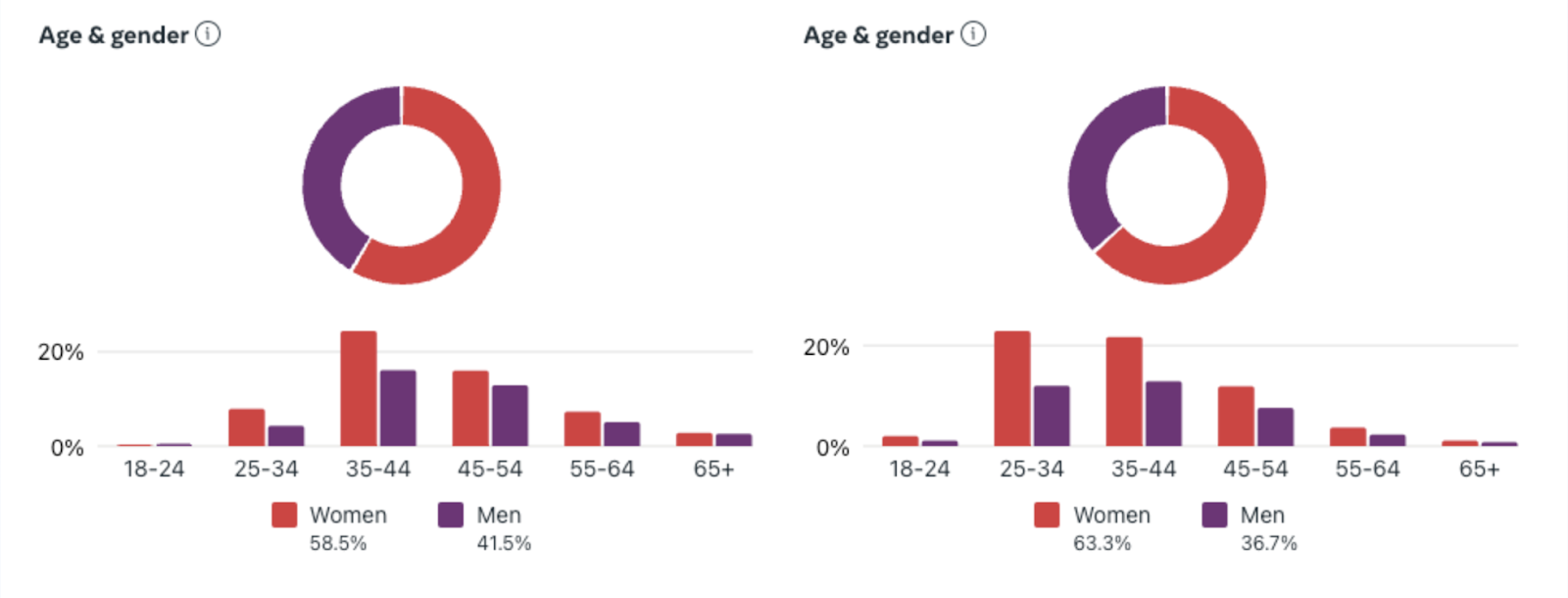
And geographic location:
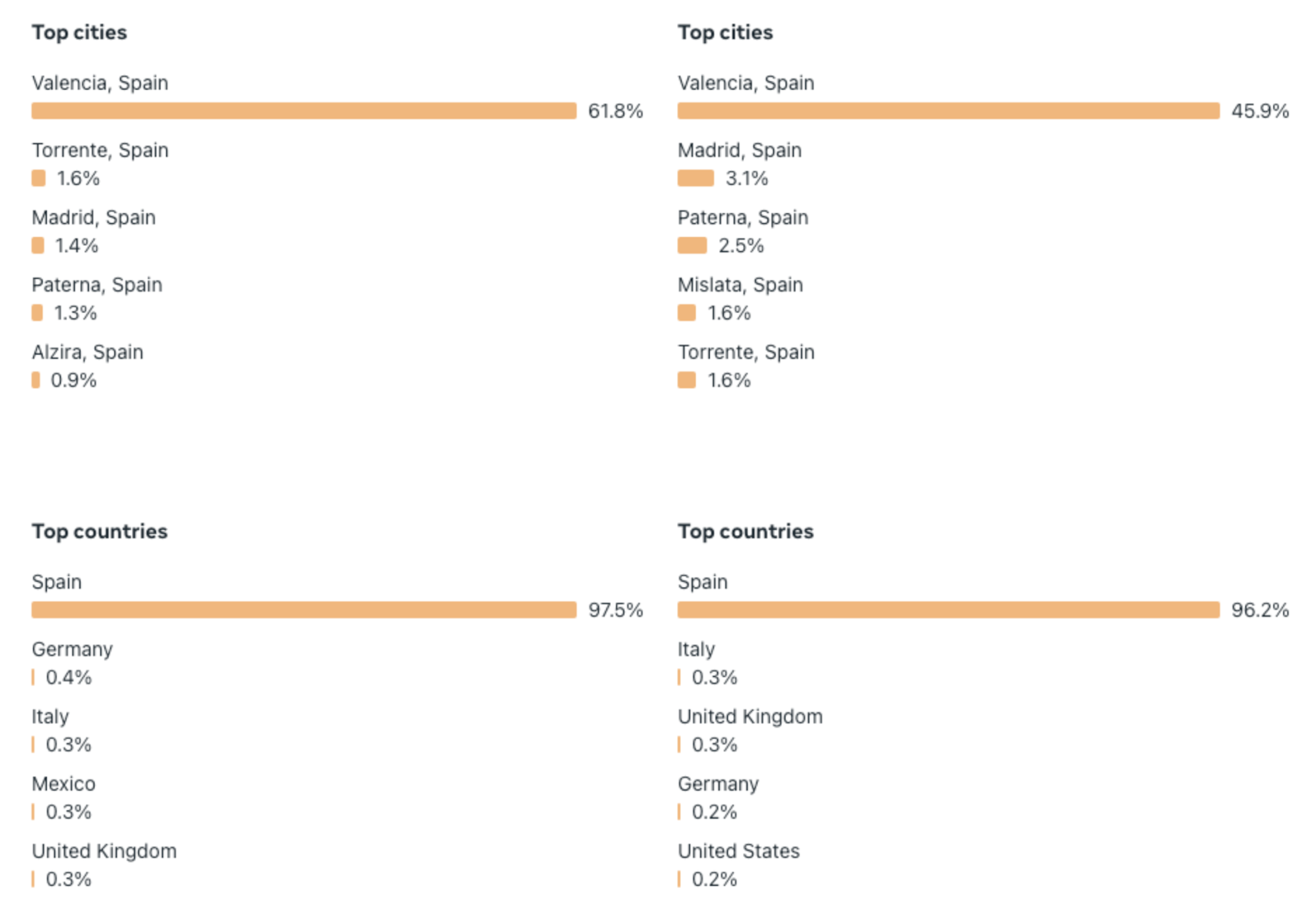
How to Use Demographic Data to Improve Your Marketing
Once you have an understanding of relevant demographic data, you can use this information to strengthen your own marketing strategy.
Here’s how:
Tailor Your Messaging
Different demographic groups respond better to certain messaging approaches.
For example, a younger demographic might respond more positively to messaging that’s trendy and incorporates contemporary slang or humor.
On the other hand, an older demographic might appreciate a more straightforward, informative approach. And messaging that includes detailed product information, testimonials, and a focus on reliability and value.
Take the example of Nike.
For younger demographics, Nike often uses upbeat, energetic, and inspirational messaging.
They focus on empowerment, self-expression, and breaking boundaries. Which often resonates with these age groups.
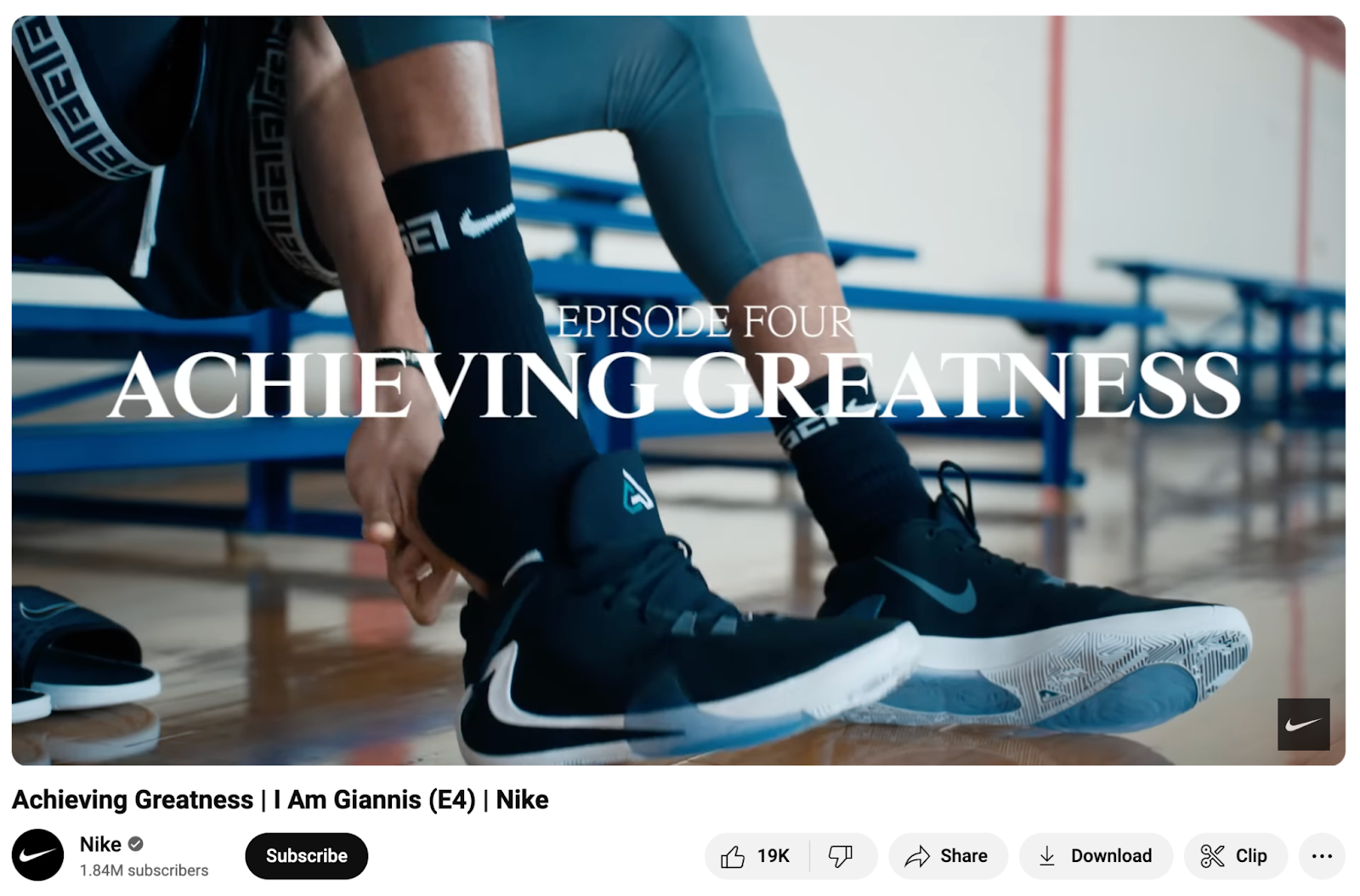
Choose Relevant Imagery
Select images that your main demographic groups will connect with.
A classic example of a brand effectively using imagery is Johnson & Johnson.
For their baby products, they use soft, nurturing images that evoke feelings of care and safety. Which resonates with new parents.

On the other hand, they use images of people hiking, running, or otherwise living active lifestyles for their products aimed at active adults (e.g., Band-Aid bandages).

Adopt Your Content Formats
Certain content formats work better for some demographics.
For example, younger demographics often lean more toward video content.
Older demographics often prefer detailed, text-based content—e.g., blogs, research papers, and case studies. These should be well-researched and backed by credible sources.
Take Examine as an example. They’re a nutrition and supplement research company. And their audience has a high level of education, with most of them having at least a university degree.
So to cater to their audience, they create extensively researched, science-based articles on health and supplement related topics.
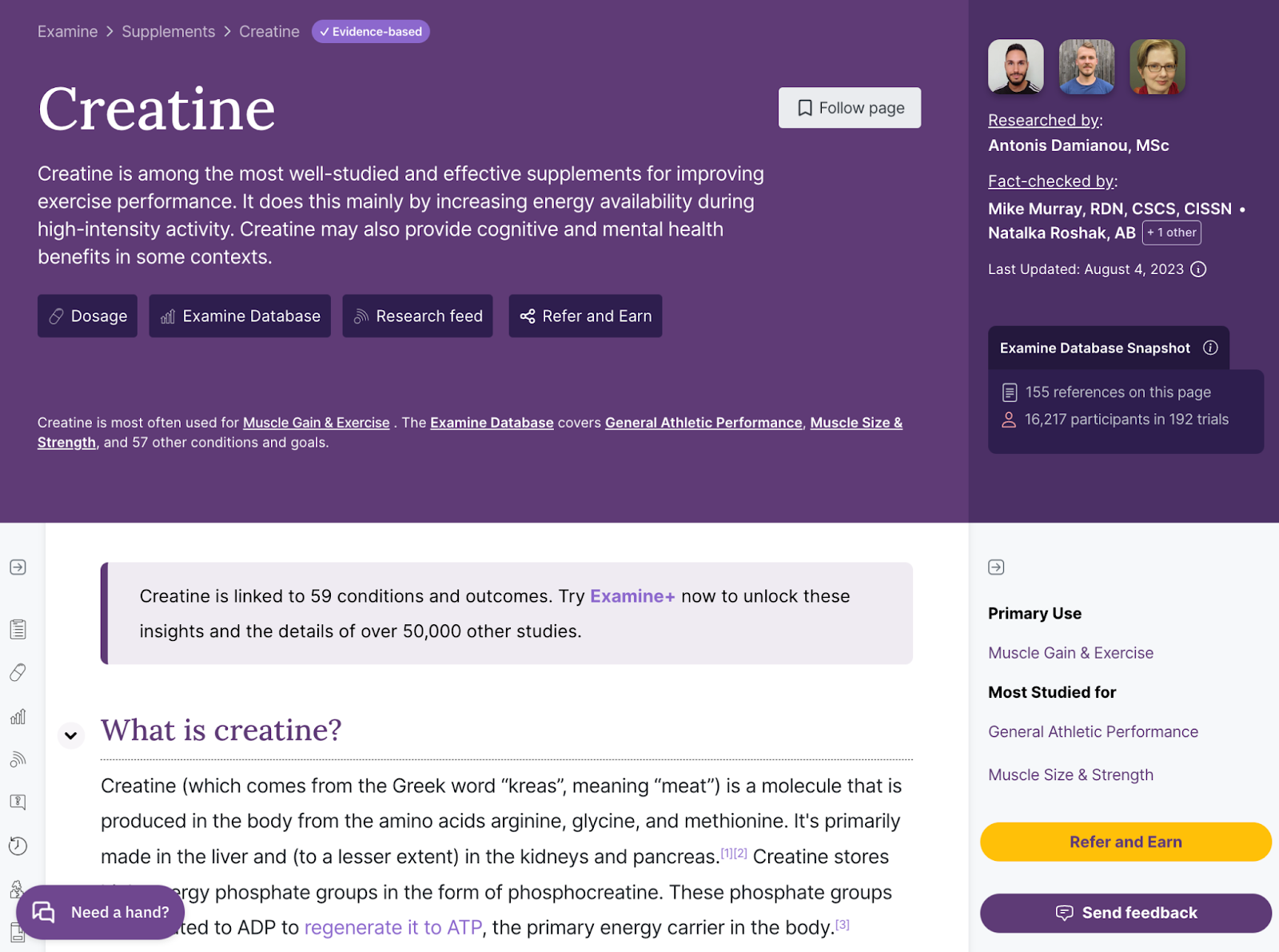
Choose the Right Channels
Your marketing channels should align with where your website visitors and other audience members spend their time and how they consume information.
For example, younger female audiences are often most active on social media platforms like Pinterest and Instagram.
But if your audience is working professionals, they might be more active on LinkedIn and X (formerly Twitter).
Older, more affluent groups still rely heavily on print publications and TV for news and entertainment. So traditional ads in those places could be effective.
Do Precise Targeting
If you run digital ads, you can use demographic data to target them to your ideal audiences.
Many ad platforms (including Google Ads and Meta’s Ad Manager) allow you to target by age, gender, income, interests, behaviors, and more.
This way, you can optimize your ad budget and increase your conversion rates by showing your ads only to the people who are most likely to be interested in your products or services.
Get to Know Your Audience Demographics
As you can tell, demographic information is incredibly valuable.
Do you know the age, gender, income, interests, and other attributes of your target audience?
If not, you can use Semrush’s One2Target to find out.
Get started today.
Source link : Semrush.com
